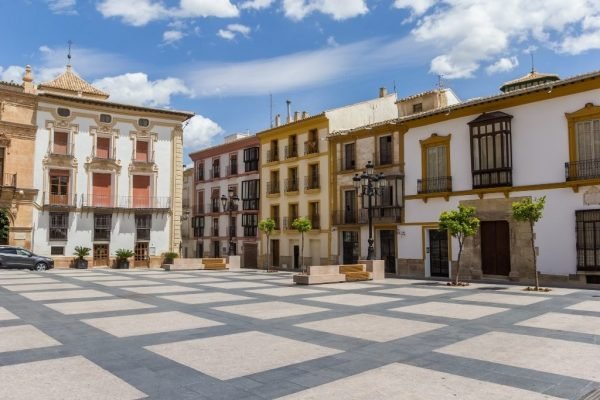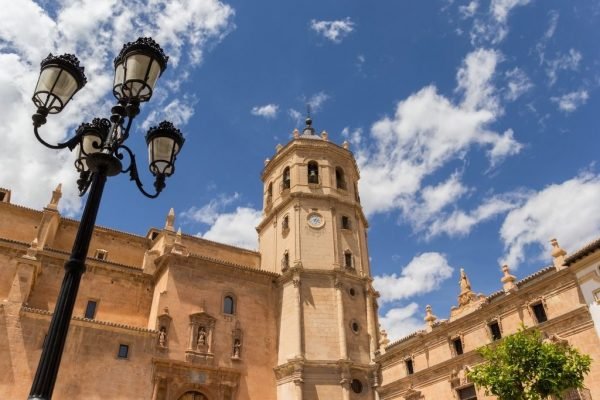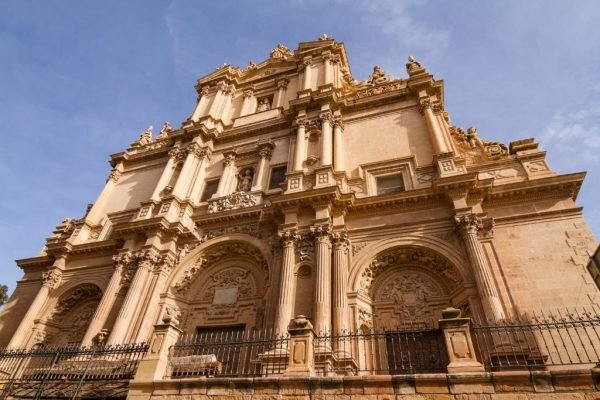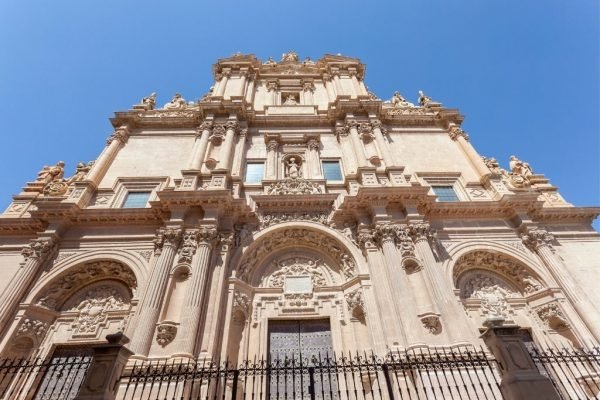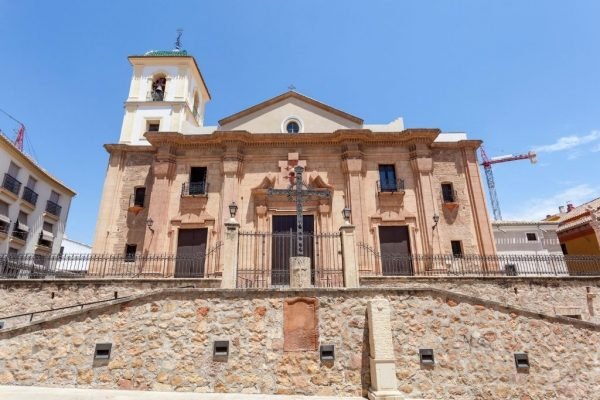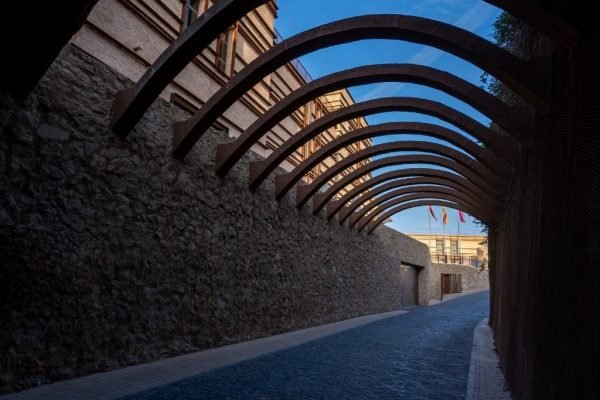Excursion to Lorca from Roquetas de Mar, Almeria
PEPE TOURS
Excursion to Lorca from Roquetas de Mar, Almeria
PEPE TOURS
Daytrip to visit Lorca from Roquetas de Mar
A marvelous excursion to visit Lorca from Roquetas de Mar. A trip along the Mediterranean Motorway till the Province of Murcia, to discover Lorca, a real “workshop of time”. We’ll visit the most beautiful sites of Lorca with a local guide. We’ll take a stroll into the old own of Lorca visitting the Main Square (Plaza de España), the church “Colegiada de San Patricio”, the visitors center and aldo the highlight of Lorca, the impressive Castle of Lorca.
Departure at the indicated time from Roquetas de Mar with destination Lorca. We drive along the Motorway of the Mediterranean Sea towards Lorca (Murcia). From afar we can see the impressive Castle of Lorca, the most important and emblematic element of the city. We start our visit in the Old Monastery of La Merced, nowadays the Visitors Center Lorca Workshop of Time. Thereafter we will get familiar with Lorca’s history, we will visit the Old Town and we will walk along the Plaza de España, the City Town hall of Lorca, the Colegiata of San Patricio, the wall of the Middle Ages and the Porch of San Antonio, the Palace of Guevara and we will end at the Museum of Embroidery Paso Blanco, what brings us to the Holy Week in Lorca. In the afternoon we drive back to the hotels. Arrival at Roquetas de Mar and the end of our service.
Departure days:
Please check availability
The excursion to Lorca includes:
– Transportation by modern coach with air conditioning and reclining seats
– Accompanying guide service
– Visit to the Visitor Center “Taller del Tiempo”
– Guided walk through the historic centre
– Visit of Saint Patrick Collegiate
– Visit the Paso Blanco Embroidery Museum
– Travelers insurance
Price details
| PRICE PER PERSON IN EUROS (SEASON 2024 - 2025) | |
| ADULT | from 72 € |
| CHILD (3 – 11 years) | from 25 € |
More information about Lorca
The city of Lorca lies on a throughway in the Mediterranean corridor, between the mountains of Sierra del Caño and the horticultural area, which has given the city an important role for many centuries. More than two thousand years of history together with a rich architectonic and artistic heritage make of Lorca a city to be discovered. In 1964 Lorca was named Conjunto Historico-Artistico (historic and cultural complex) and is called the “baroque city” because of its important monumental heritage which belongs to this style.
From the Palaeolithic Period to the Romanization a large variety of cultures and colonisations converged in the city of Lorca, as many archaeological sites do witness of. Good examples are the Milestone from the roman period, the Tower of the Espolon and the Tower Alfonsina. Also noteworthy are the Porch of San Antonio, a gate in the old city walls that defended the city and which dates back to the 10th century, the churches and monasteries from different periods and styles, the palaces and the mansions like the Palace of Guevara, the Palace of the Counts of San Juan or the Mansion of the Mula. Regarding military architecture the fortress is significant, as the old medieval alcazaba was restructured in an impregnable enclosure. As part of the popular architecture the buildings Zapateria and Cava must be mentioned, situated at the cobbled streets that flank the Plaza de España.
Although the Castle is the most important and most emblematic element of the city, it is the Plaza de España and its surroundings that give Lorca its elegance, and it forms a hallmark for the importance Lorca had in Modern Time. The urban design of this square, the former Plaza de Aguera, started when the city began to chance its morphology and further developed itself outside the city walls. During its whole existence it has served for the most diverse activities, such as a place for prayer, for festivities, markets, bullfights and the execution of prisoners.
Of all religious buildings the Colegiata of San Patricio is without any doubt of the highest importance and significance. This temple, dedicated to San Patricio (Saint Patrick, the patron saint of Ireland), in memory of and in commemoration of the victory in the Battle of the Alporchones, fought by the people of Lorca against the Muslims on March 17th, 1452.
The Museum of Embroidery Paso Blanco, the former Monastery of Santo Domingo, has an exposition of its best works in silk and gold covering the whole history of the Brotherhood, as well as carriages, suits of armour and other objects that form part of the different biblical groups that celebrate the Procession of Holy Week.
The House of Guevara, also called the House of the Columns, is the most important private house of the whole baroque style of the city. Probably it was Juan de Guevara García de Alcaraz, Knight of the Order of Santiago and one of the governors of Lorca, who in 1689 ordered the construction of this building for a private house. At present some of the rooms of the house can be visited, such as the Hall of Camachos, the hallway, the red room, the main bedroom and the dining room. Of all the rooms that are open to the public well worth seeing are the side tables and the dressers, all in different styles and spread across the whole building. Also, interesting to see are a bed in Portuguese style, a collection of fans and above all a collection of paintings. The patio is formed by two arches on either side of the square, leaning upon columns of white marble and decorated with floral motives, child’s heads, weapons and simulated architecture on the upper floor.
In 1931 the Castle of Lorca was declared Artistic Historic Monument. It crowns the city from a hill which offers optimal conditions for control and safety over the valley of the river Guadalentin, circumstances that favoured the establishment of the city since prehistoric times. The actual physiognomy of the Castle is the result of the many reforms and renovations that took place in order to adapt the castle to its military function. The rests of the mighty Islamic alcazaba (713 – 1244) are visible on some of the mural paintings which are known under the name “el espaldon” and next to the wells that corresponded to the vital requirements for water. After the surrender of Lorca in 1244, the Castle continued its military functions, accentuated by the fact that it formed the border with the Nasrid Kingdom of Granada. During the second half of the thirteenth century Alfons X started the construction of three towers, one of which got lost, nowadays characteristic for the physiognomy of the fortress. At present the alcazaba, called “Fortress of the Sun”, has been converted into a thematic whole where leisure, culture, diversion, instructiveness and history are combined with show. The Castle of Lorca is a theatre where young and old are the real leading figures and where fun and culture are guaranteed.
Please note that
* Pepe Tours reserves the right to change the itinerary and the order of the excursions for organizational reasons.

